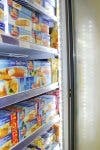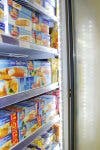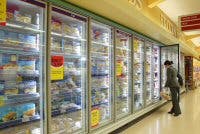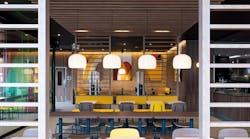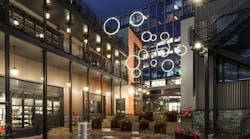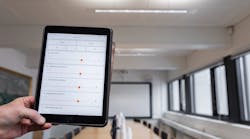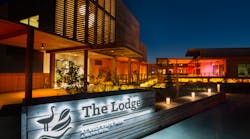Anyone going to a typical supermarket will be aware of the variety of display case which is being used. There are typically long aisles of open freezer cases, vertical walls of closed-door freezer and cooler cases, and aisles of open-shelved storage, as well as a variety of individual free-standing displays for branded product.
NuaLight’s CryoLED™ luminaires are especially designed for freezer installation, either during case manufacture or for retrofit (see Figures 1 & 2). LEDs come into their own in cold environments, with increased brightness, extended lifetime and no on-off difficulties.
1. Energy usage: even with current efficiency levels in mass-produced white LEDs, it is possible to make significant energy savings in some applications.
2. Improved sales performance: when a typical wall of freezer doors (with fluorescent tubes spanning the range from dead through flickering, dim to fully functional) is replaced with bright and uniform LED luminaires, there is a substantial improvement in sales from those cases. We have measured this effect in-store.
Energy usage
In a recent trial, NuaLight’s CryoLED lighting system was found to be 29% more energy efficient than comparable fluorescent lighting in a single door freezer case. The test consisted of the comparison of a pair of new 36-watt, 4 ft fluorescent tubes, and a pair of 30-watt 4 ft CryoLEDs.
Table 1 shows the data measured during the 168-hour trial. Because the freezer has to deal with waste heat from the lighting, the difference in overall consumption in the case is greater than the difference in consumption in the lighting.
The result of the test is a reduction of the incremental illumination case consumption from 164 watts to 117 watts – a reduction of 29% - by using CryoLED.
Sales increase
The sales data were recorded during a typical 5 week period and annualised. The results are compared in Table 2 with previous sales data from the same units. The results are striking, with an additional annual margin per door of over $1000, leading to a payback period on the additional capital investment of less than 3 months.
Summary
Although fluorescent lighting is relatively cheap to buy and install, the overall cost of ownership ends up being quite high, due to ongoing maintenance requirements (bulb and ballast replacement) and unnecessarily high energy costs.
This is especially true for freezer lighting in the majority of stores which open for 12 hours per day, where freezer illumination is often left on 24 hours per day due to difficulties in restarting in cold environments.
When maintenance, energy and additional sales performance are taken into account, there is a substantial return on investment over the lifetime of a typical display case, and a payback period as short as 3 months.
